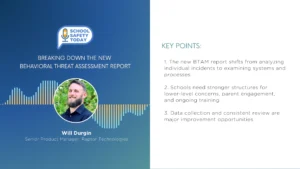10 Minutes to a Better Building: Lighting Systems That Brighten Building Operations
When the subject turns to building operations, the focus is on systems such as HVAC and how to maximize comfort and efficiency. But what about other essential building components that could also benefit from today’s technology solutions? Doug White, Lighting Solutions Manager at Trane, and John Cain, Energy Services Business Development Leader, Boland, spoke with Tyler Kern about the many benefits lighting systems can play in the overall operations of a building.”
“When we talk about lighting and energy efficiency, lighting is a phenomenal first step,” White said. “Most people think about it as the low-hanging fruit within energy systems within our buildings. When you convert your lighting systems from fluorescent or HID over to an LED technology, you immediately recognize 50-60% lighting energy savings.”
And while the benefits of LED are known and established, Cain said the technology hasn’t caught on the way he expects it should have. “Most buildings still have the old technology,” Cain said. “Old lighting systems affect about 80% of the buildings on the marketplace today. So, there’s a lot of opportunities to upgrade lighting systems and improve the quality of life for the occupants of the building.”
Cain mentioned how lighting systems, like HVAC systems, are designed to handle peak load or maximum darkness. Unlike HVAC systems designed to modulate based on the load conditions, lighting systems are either on or off. “When lights are on, they are typically at 100% of their energy capacity so, they’re not taking advantage of the ambient light conditions available,” Cain said. “Fully integrating control for both HVAC and lighting will allow the system to share occupancy sensing and utilize ambient dimming control, and this allows an owner to maximize their investment.”
Follow us on social media for the latest updates in B2B!
Twitter – @MarketScale
Facebook – facebook.com/marketscale
LinkedIn – linkedin.com/company/marketscale









